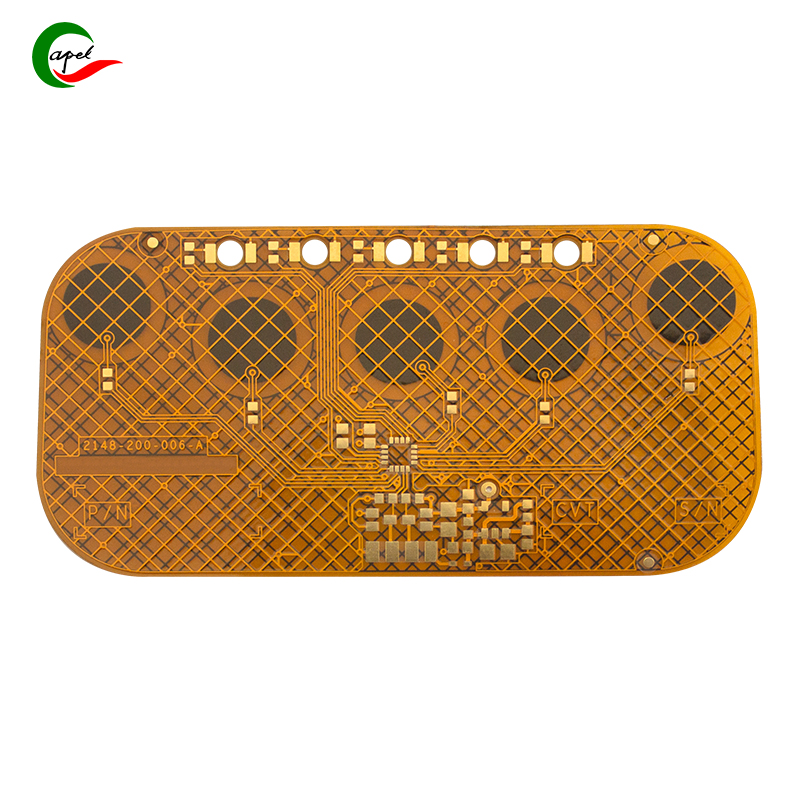In the race to build faster, smaller, and more durable electronics—from 5G base stations to advanced medical scanners—one component often flies under the radar: the copper clad laminate (CCL). And when it comes to balancing performance, reliability, and versatility, few materials rival FR4. But what makes this seemingly humble laminate a linchpin in high-performance flexible PCBs? Let’s unpack its role in powering the devices that define our modern world.
FR4 is a composite material: a woven glass fiber cloth impregnated with flame-retardant epoxy resin, bonded to one or both sides with a thin layer of copper foil. The "FR" stands for "flame resistant," a critical safety feature, while "4" denotes its position in a class of epoxy-based laminates.
In flexible PCBs (FPCs), FR4 isn’t used as the primary flexible substrate (that’s usually polyimide, PI). Instead, it acts as a rigid reinforcement layer in rigid-flex designs—those hybrid circuits that combine flexible segments (for bending) with rigid sections (for mounting components). This duality is where FR4 shines.

High-performance electronics demand materials that can handle extreme conditions: blistering heat, high-frequency signals, mechanical stress, and relentless use. FR4 delivers on all fronts, making it indispensable in these key areas:
Devices like 5G transceivers, electric vehicle (EV) motor controllers, and industrial sensors generate intense heat—often exceeding 100°C. FR4’s structure is engineered to resist thermal degradation:
- High glass transition temperature (Tg): Premium FR4 grades (like high-Tg FR4) have a Tg of 170°C or higher, meaning they retain their mechanical and electrical properties even when heated. This prevents warping or delamination under sustained high temperatures.
- Thermal conductivity: While not as conductive as metals, FR4’s glass-epoxy matrix efficiently dissipates heat from components like power amplifiers or microprocessors, preventing hotspots that can crash systems.
In rigid-flex FPCs for EVs, for example, FR4 rigid sections act as heat sinks for battery management system (BMS) chips, ensuring stable operation even in the sweltering underhood environment.
5G, radar, and aerospace electronics rely on signals traveling at speeds up to 100Gbps. Any signal loss or distortion can cripple performance. FR4 excels here:
- Low dielectric loss (Df): High-performance FR4 variants (like "high-frequency FR4") have a Df of <0.01 at 1GHz, minimizing signal attenuation. This is critical for 5G small cells, where FR4-based rigid-flex FPCs connect antennas to transceivers without losing data.
- Controlled impedance: FR4’s stable dielectric constant (Dk ~4.2) allows engineers to design circuits with precise impedance (e.g., 50Ω for RF signals), preventing reflections that corrupt data.
In radar systems for autonomous cars, FR4-clad rigid-flex FPCs ensure that millimeter-wave signals from LiDAR sensors reach the control unit with minimal distortion—critical for accurate obstacle detection.
High-performance devices don’t live in labs—they’re exposed to vibration, shock, and physical stress. FR4 adds the backbone needed to survive:
- Rigidity for component mounting: Chips, connectors, and heat sinks need a stable platform. FR4’s rigid sections in flexible PCBs provide this, preventing solder joint fatigue in vibrating environments (like aerospace electronics or industrial robots).
- Tear resistance: When paired with flexible PI in rigid-flex designs, FR4 reinforces areas prone to bending stress (e.g., the junction between flexible and rigid sections), extending the FPC’s lifespan from thousands to millions of cycles.
Medical devices like robotic surgical tools, for instance, use FR4-reinforced FPCs to withstand repeated sterilization cycles and mechanical stress while maintaining precise signal transmission.
High-performance materials like ceramic or PTFE (Teflon) offer superior properties but at a steep cost. FR4 strikes a sweet spot:
- Affordability: Compared to specialized laminates, FR4 is 30–50% cheaper, making it feasible for mass-produced high-performance devices (e.g., 5G routers or EV chargers).
- Maturity: Decades of manufacturing refinements mean FR4 can be fabricated into complex rigid-flex designs with tight tolerances (±0.02mm), ensuring consistency even in high-volume production.
While FR4 is versatile, some extreme applications demand more:
- Ultra-high frequency (mmWave): For 6G or satellite communications (30GHz+), materials like liquid crystal polymer (LCP) or PTFE offer lower Df than FR4.
- Extreme temperatures: Aerospace systems exposed to -200°C to 300°C use polyimide-based laminates instead.
Even then, FR4 often plays a supporting role—for example, as a rigid base in hybrid laminates that combine FR4 with LCP for both cost and performance.
FR4 copper clad laminates may not grab headlines, but they’re the backbone of countless high-performance devices. By balancing thermal stability, signal integrity, mechanical strength, and cost, FR4 enables flexible PCBs to thrive in environments where failure is not an option—from the inside of a 5G tower to the operating room.
As devices push the boundaries of speed, durability, and miniaturization, FR4 will continue to evolve (with higher Tg, lower loss variants) to meet the challenge. For engineers designing the next generation of electronics, overlooking FR4’s role is a mistake—because behind every breakthrough device, there’s a laminate working tirelessly to make it possible.
Founded in 2009, our company has deep roots in the production of various circuit boards. We are dedicated to laying a solid electronic foundation and providing key support for the development of diverse industries.
Whether you are engaged in electronic manufacturing, smart device R&D, or any other field with circuit board needs, feel free to reach out to us via email at sales06@kbefpc.com. We look forward to addressing your inquiries, customizing solutions, and sincerely invite partners from all sectors to consult and collaborate, exploring new possibilities in the industry together.